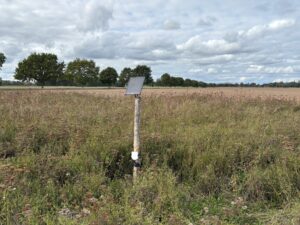Human pressures are having a significant impact on plants, but a new tool could help to reduce the risk of extinction, according to research.
The new Species Threat Abatement and Restoration (STAR) metric can help to identify threats to plant species, allowing decision makers to see opportunities to prevent extinction.
This was used in a new study which applied the metric to data from Brazil, South Africa and Norway to discover opportunities to reduce the extinction risk for plant species.
Building more sustainable agricultural and timber production practices would benefit plants the most, researchers conducting the study revealed.
Lead author, Dr Louise Mair, of Newcastle University’s School of Natural and Environmental Sciences, said: ‘The study demonstrates the importance of considering the conservation needs of as great a diversity of species as possible. While the greatest opportunity to reduce the extinction risk of both terrestrial plants and terrestrial vertebrates, such as amphibians, birds and mammals, comes from mitigating threats from agriculture, the relative importance of tackling other threats differed for plants compared to a previous study on terrestrial vertebrates.’
Agricultural activities were found to pose a considerable threat to plants in all three countries and the risk to 2,791 common plants in Brazil could be reduced by 29% if these activities were tackled.
Similarly, the threat to 1,894 plants in South Africa could be reduced by 36%, while in Norway the risk to 301 plant species could be reduced by 54%.
Urban expansion also acts as a threat to plants, as scientists found mitigating this could reduce the risk of extinction by 21% in Brazil.
In Norway, policies addressing the climate crisis could reduce the risk of plant extinction by 39%, however conservation cannot tackle this alone.
MSc. Lara Monteiro, a collaborator at the International Institute for Sustainability and Ph.D. candidate at the Natural Resources Graduate Program at the University of Vermont (US), and MSc. Eduardo Fernandez, co-chair of the IUCN SSC Brazil Plant Red List Authority and coordinator of the Red List Unit at the National Centre of Flora Conservation in Rio de Janeiro Botanic Garden (Brazil), added: ‘Developing research on more effective actions to combat and mitigate species loss under climate change scenarios, such as forest landscape restoration, can help us to bring back from the brink thousands of species that are currently facing extinction and, thus, allow for the achievement of national targets.’
Researchers hope the analysis could aid conservation efforts in the Global Biodiversity Framework currently being debated by delegates at key biodiversity conference COP15.
Diagram by IUCN















